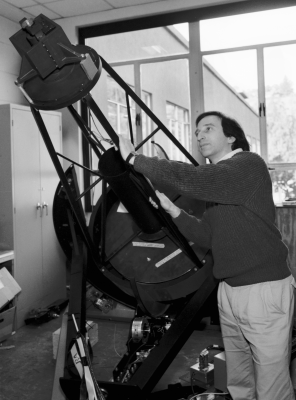NESAP Postdoctoral Fellowships

Nobelist Saul Perlmutter was once a postdoc. (Credit: Berkeley Lab)
NERSC is looking for multiple highly motivated postdoctoral fellows to fill an essential role within the NERSC Science Acceleration Program (NESAP). Through NESAP, postdocs will collaborate with scientific teams to enable and improve solutions to deep, meaningful problems across all program areas funded by the Department of Energy Office of Science. NESAP postdocs will work with these science teams to incorporate computational performance improvements and workflow related advanced capabilities to their simulations of complex physical systems, advanced data analytics, and machine learning at scale on energy-efficient supercomputers.
Successful candidates will join different teams working in the performance and advanced capability fields outlined in the call for proposal.
The Challenge
Advancement in computational architectures as well as new paradigms, such as cloud and edge computing, will enable many science teams to accelerate their workflows. These areas are of current and future importance as outlined by DOE's IRI initiative. NESAP serves as a key step to prepare for future systems which will be deployed at NERSC. Postdocs hired under this fellowship will target two key areas: Performance goals and Advanced capability goals.
Many codes running at NERSC need to be adapted or optimized to run efficiently on GPUs. Ideally, codes ported to GPUs should be agnostic to system vendor and readily run on other HPC DOE systems, Frontier and Summit. Advancements in tensor core computing and reduced precision algorithms are also some of the novel approaches potentially of interest to the science teams. These are some example performance areas NESAP postdocs can contribute to science teams.
Advancements in workflow tools provides greater flexibility and efficiency to science teams. Smart scheduling, X-as-a-service, and end-to-end workflow profiling for complex workflows, similar to superfacility project, are exciting advanced capability areas that can significantly transform how science teams will use and interact with NERSC. As a NESAP Postdoctoral Fellow, you will be a part of a multidisciplinary team composed of computational and domain scientists to enable incorporation of these advanced capabilities to projects under NESAP. Successful candidates are expected to collaborate with each other across performance as well as advanced capability areas.
NESAP has established a track record of enabling its postdocs to pursue careers in data science, HPC, and scientific computing both in industry and at national labs. A detailed list of current and former NESAP postdocs can be accessed here.







